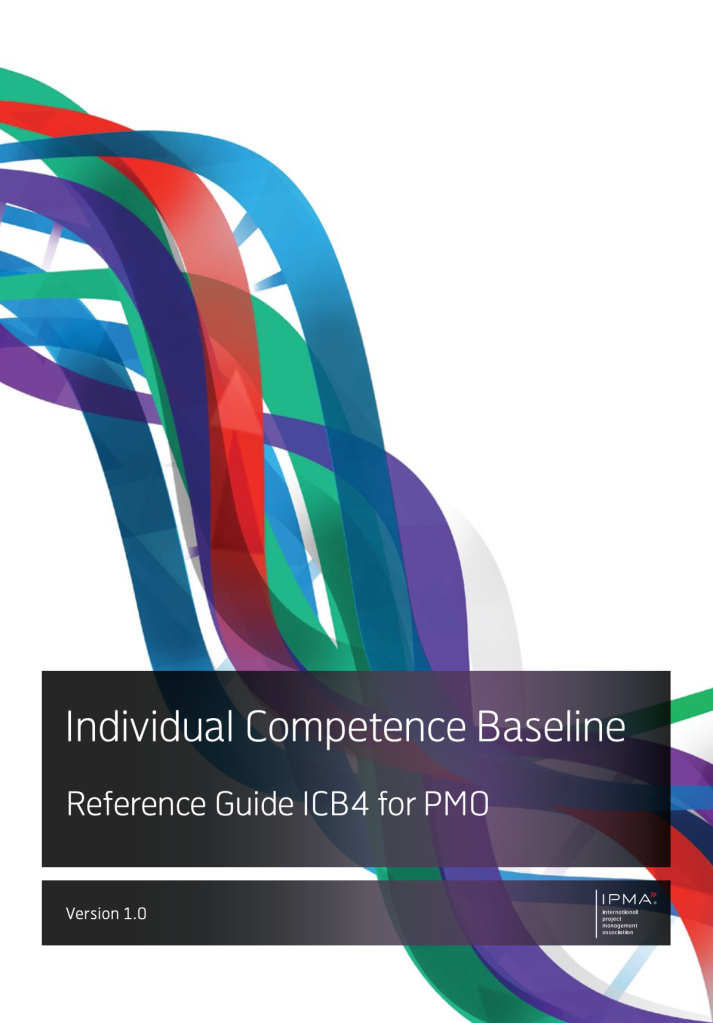
This new IPMA standard defines the competences for the individuals working in PMO. All the competences are aligned with the IPMA ICB that is used by all the project, programme or portfolio managers in their everyday activities.
A PMO has three main activities:
- Design – the creation, establishment and maintenance of standards, processes, procedures, and tools that define how work should be done inside.
- Perform – performing administrative and specialist support work.
- Monitoring and reporting – this may involve recording and reporting on the progress of work but also ensuring that agreed arrangements are met.
Within all three main activities, the PMO worker also has an advisory role towards their manager and other stakeholders.
Essentially, there are four positions of a PMO recognized: within ‘management by projects’: as a knowledge centre (permanent), within a portfolio (permanent), programme (temporary) and project (temporary).
this reference guide describes the various competency elements for a PMO employee or PMO manager in line with the ICB4 competence elements perspective, people and practice.
The perspective competence elements are strategy, governance, structures and processes, compliance, standards and regulations, power and interest and culture and values.
The people competence elements are self-reflection, and self-management, personal integrity and reliability, personal communication, relationships and commitment, leadership, teamwork, conflict and crisis, resourcefulness, negotiation, and results orientation.
The practice competence elements are project design, requirements and objectives, scope, time, organisation and information, quality, finance, resources, procurement, plan and control, risk and opportunity, stakeholders, and change and transformation.
For each competence element we get the purpose, description, knowledge, skills and abilities and related key competence indicators (measures). The ICB4 offers also a definition of the competence element, related competence elements and for each key competence indicator a description.
Conclusion.
At this moment I see a revival of portfolio management and the PMO to offer that service. As stated, this reference guide describes the various competency elements for a PMO employee or PMO manager. In describing these, this Reference Guide refers to projects. This can be read, according to this guide, as project, programme and portfolio. I find this confusing. I can see that a temporary project office supports a project manager, and the competencies of the project office (or PMO) employee differ from those of a project manager. The ICB4 doesn’t cover these competencies. However, the ICB4 already includes the competencies needed for portfolio management. What does this mean? Can a PMO employee not be a portfolio manager or portfolio analyst? Besides the missing sub-paragraphs, I see in the description of the competence element a reference to the PMO, but descriptions of key competence indicators are lacking, and here I would expect differences between project, programme, or portfolio PMO employees and the PMO manager. How do we position this guide with respect to portfolio management in comparison with the ICB4?
The ICB4 guide describes the competencies of project, programme, and portfolio managers. What roles does this guide describe? Competencies of a Head of PMO running many programmes and projects and offering portfolio management and Center of Excellence services are completely different from those of a PMO employee supporting a project manager. A PMO employee supporting a programme manager is different from one supporting a project manager or a knowledge center or Center of Excellence employee. I could see that a guide offering competencies of a PMO manager or different roles of PMO employees could add value, but with this guide, I am completely lost.
The Individual Competence Baseline – Reference Guide ICB4 for PMO can be found here: https://shop.ipma.world/shop/ipma-standards/e-books-ipma-standards/ipma-reference-guide-icb4-for-pmo-ebook/?v=796834e7a283















